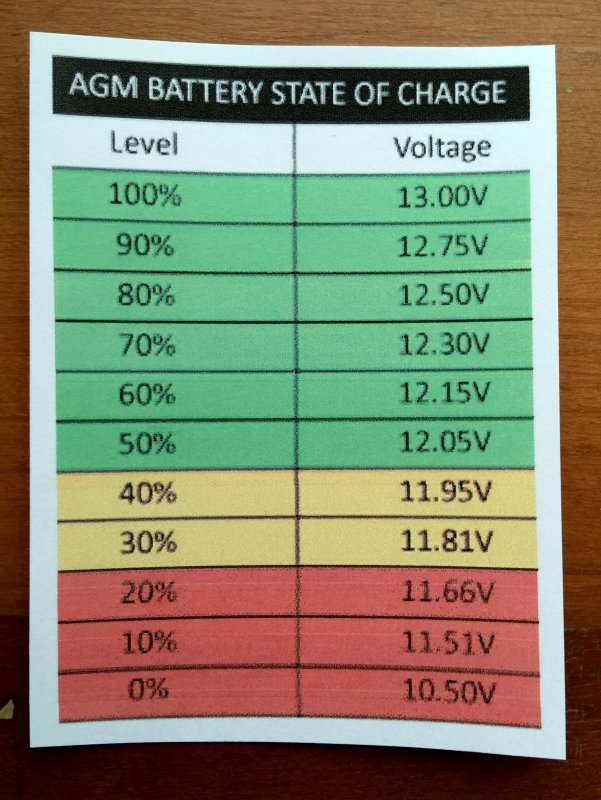When I disconnected shore power. the inverter screen displayed 13.1V and both batteries checked out at 13.1 V on the analog gauge.
Displays and gauges are great tools. They share the information about the batteries based on the place they are in the circuit. The Inverter display is digital and is better than analog. Mostly because our eyes can fool us into seeing what we want to see. Ever looked at your car gas gauge (Analog display). See it is almost on empty. Then move your head a bit and see that there is a little bit of space between the needle and the red line with the big E. Ah man, I got plenty of gas. I can get another 100 miles before the fill.
Not knowing where the gauges are connected in the circuit, they may hide voltage drops (voltage drop occurs based on cable length and stuff that gets in the way like a switch). It can be difficult to assess the actual voltage status (stored power) of the batteries. This is why we use Digital Volt Meters and test at the battery terminal.
From the last charging period, give the batteries time to settle (discharge plate surface charge). The 13.1V sounds like the readings were taken shortly after you stopped charging the batteries. Not knowing the temp of the batteries and the time from last charge can give you a false sense of the status. We wait for 24hours, then check the battery by contacting the positive terminals and the negative terminals with the DMV leads.
I use this as a "rough guide" for the battery status. The chart is from MaineSails website on Battery Voltage and State of charge (SoC)
SoC | Chart Resting Voltage |
90% | 12.75V |
80% | 12.50V |
70% | 12.30V |
60% | 12.15V |
50% | 12.05V |
Please be aware that some charts on the internet are for resting voltages. A resting voltage is 12 – 24+ hours of no loads or charging at 77°F. The “at 77°F” is absolutely critical because at temps above 77°F surface charge dissipates more rapidly and at temps below 77°F the surface charge dissipates more slowly.
After 20 Hour Capacity Test = 95.69 Ah Capacity For this test I wanted to: Show the relationship of loaded voltage to SoC on a popular AGM lead acid battery. Utilize a battery not in perfect health to represent real
marinehowto.com
On shore power, both batteries show 14.2 V (14.4V), regardless of the selector position. This means that both batteries are being charged at the same time, something that I thought was true all along.
Each battery manufacture has a "Charging Profile" to get optimum life from there battery.
For example this is the profile for Lead Acid Batteries manufactured by Trojan.
| Table 2 | |
| Charger Voltage Settings for Flooded Batteries | System Voltage |
| Charger Voltage Setting | 12v |
| Absorption/Bulk Charge | 14.7 |
| Float Charge | 13.5 |
| Equalize Charge | 16.2 |
The table indicates a 14.7 V Bulk Charge not a 14.4 V charge as being supplied by your Inverter/Charger. One way of thinking about it is the battery is being under fed. It will survive for a while but eventually this will take it's toll on the longevity of the battery.
Not that your inverter is "bad" it is just not supplying the voltage that the batteries need to charge at optimum rate. It means that you will need to replace the battery a bit sooner than other wise "possible". What some boaters seek is the longest life, we can get out of a consumable. We are convinced that this means more $ in the boat or cruising kitty to do more things with the boat. The boat hobby is more sustainable.

